|
When you think of the Olympics you think of the sports: Speed skating, Bobsled. Snowboarding. Track, Gymnastics. Swimming. Tennis. Just to name a few. You may even think about some of the Olympians: Snowboarders Shaun White and Kelly Clark. Speed skater Apollo Ohno. Swimmers Michael Phelps and Katie Ledecky. Or even gymnast Simone Biles and sprinter Usain Bolt. But do you ever think about the science behind each sport? You should. Math and physics play a huge part in every part in the Olympics. Think about it. One of the most basic forces, friction, is a factor in everything an athlete does. What is friction? It’s the force that pushes back on you as you swim through the water or run through the air. Friction not only affects an athlete, but also the object they may be throwing, hitting, or kicking—like a baseball, a tennis ball, or a soccer ball. Movement of any kind deals with physics of air flow, engineering design, and (unfortunately) sometimes collision. The verdict? Athletes need to know a LOT of science to do well in their sports. Science is not just found in the activities themselves but also in the equipment they use and clothes they wear. Most of today’s superstar athletes rely on clothing and equipment enhanced with nanotechnology. What is nanotechnology? Nanotechnology is the science of the super small—microscopic even. One nanowire is 1,000 time thinner than a single strand of human hair. Now that is SMALL! Materials made with nanotechnology are stronger, more durable, and yet lighter and more flexible. Nanotechnology produces swimsuits that allow the athlete to glide through the water faster, golf clubs that hit the ball farther, and tennis rackets that flex more easily to provide the hard smash across the net. This innovative new technology has already been used in the Olympics. In 2008, swimmers Michael Phelps and Natalie Coughlin wore swimsuits that were created with nanofibers. These nanofibers are woven tightly so that the swimmer’s bodies become more streamlined (like a shark!) allowing them to glide through the water faster. In the 2014 winter Olympics, the U.S. speed skaters wore specially created vented suits (like the swimsuits—to reduce drag), and in the 2018 winter Olympics, the USA Snowboarders will be wearing snow gear inspired by the space program. Nanotechnology is a cutting-edge science that is changing the world of sports—and in particular the Olympics— as we know it. Will you make nanotechnology part of your game? The LZR Racer is a line of completion swimsuits manufactured by Speedo using a high-technology swimwear fabric. In March 2008, athletes wearing the LZR Racer broke 13 swimming world records. Much like other suits used for high competition racing, LZR Racers allow for better oxygen flow to the muscles, and hold the body in a more hydrodynamic position, while repelling water and increasing flexibility. Kathy Barnstorff via Wikimedia Commons Serena Williams uses a nanotech racket and Phil Mickelson uses nanotech technology in his game. Seems to be going well for both of them. (l) Wikimedia Commons (R) Photo by Siyi Chen via Wikimedia Commons 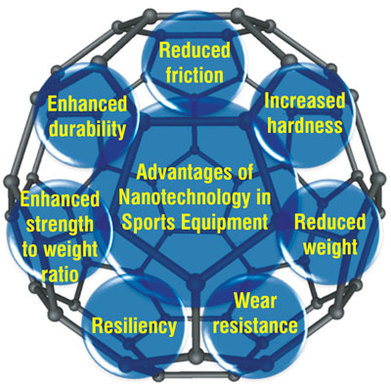 A graphic highlighting all of the ways nanotechnology enhances the effectiveness of sports equipment. Nanowerk via Wikimedia 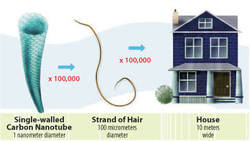 You would have to increase a carbon nanotube x100,000 to make it the size of a strand of hair. NIEH.gov 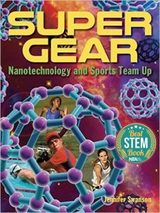 Want to know more? Jennifer Swanson's Super Gear: Nanotechnology and Sports Team Up was listed as one of the 2016 Best STEM Books by the National Science Teachers Association. Colorfully illustrated by photos, this book introduces "the science of the very small" as applied to sports equipment and clothing. MLA 8 Citation
Swanson, Jennifer. "The Science Behind the Olympics." Nonfiction Minute, iNK Think Tank, 7 Feb. 2018, www.nonfictionminute.org/the-nonfiction-minute/ the-science-behind-the-olympics.
0 Comments
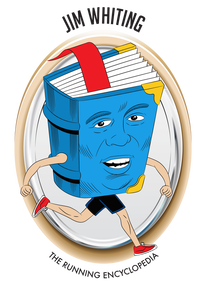 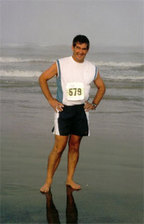 Bill Mills at the beach Bill Mills at the beach Billy Mills was just a face in the crowd of nearly 30 runners at the 10,000-meter run at the 1964 Olympic Games in Tokyo, Japan. His best time was nearly a minute slower than the race favorites. Part-Lakota Sioux Indian, Mills was a scrawny kid, who had grown up in poverty and racial bias. Whites regarded him as an Indian. Indians sneered that he was part-white and therefore not one of them. His father had encouraged the boy to envision a better life: “You have to look deeper, way below the anger, the hurt, the hate, the jealousy, the self-pity, way down deeper where the dreams lie, son. Find your dream.” Mills began finding his dream when he discovered his talent for running. He earned an athletic scholarship to the University of Kansas. Then he qualified for the U.S. Olympic team. Still, no one expected anything of him. He asked for shoes from the company that outfitted American runners. Sorry, he was told. We only give shoes to potential medalists. You don’t qualify. Mills kept a diary. Six weeks before the 10,000 meter race, he wrote “I’m in great shape….I’m ready for a 28:25 [twenty-eight minutes, twenty-five seconds].” He had never run that fast. Nor had any American. Nor anyone in any previous Olympics. The gun sounded. As each of the 25 laps rolled by, more and more runners fell off the pace. At the start of the final lap, Mills was one of three runners still in contention. As they rounded the first turn, Australian Ron Clarke shoved Mills out into the third lane. Mohamed Gammoudi of Tunisia took advantage of the opening and pushed his way between the other two, knocking Mills off balance for a moment. As the runners headed down the final straight, television cameras showed a tight battle between Gammoudi and Clarke. Mills was nowhere to be seen. Suddenly the television announcer screamed “Look at Mills! Look at Mills!” Mills bounded back into the picture, passing Clarke and then Gammoudi almost as if they were standing still. He maintained his pace to the finish line, five yards ahead of Gammoudi and ten in front of Clarke. His time of 28 minutes, 24.4 seconds was virtually identical to what he had visualized. He remains the only American to win the 10,000 meters at the Olympics. Mills crossing the finish line in the 1964 Olympics. Watch Mills run the final lap 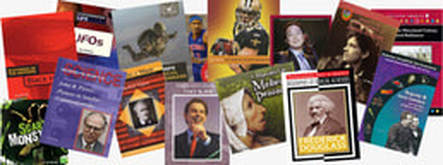 Jim Whiting is a walking encyclopedia. He has written more than 180 (count 'em!) books on many subjects. You can learn more about him here. MLA 8 Citation Whiting, Jim. "No Shoes for You." Nonfiction Minute, iNK Think Tank, 21 Sept. 2017, www.nonfictionminute.org/the-nonfiction-minute/no-shoes-for-you. 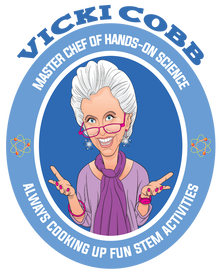 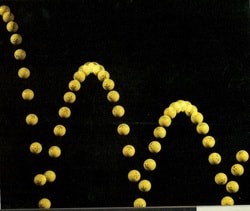 You can’t play tennis unless you know where the ball will be after it bounces. You can’t pass a basketball unless you understand how to angle a bounce so that it goes where you want it to go. As long as the court surface is smooth and flat, a ball’s bounce is very predictable. Its path depends on gravity and on the strength and direction of the force that sets the ball in motion. Thanks to high speed photography we can get a closer look at a bouncing ball. This is a multiple exposure photograph of a bouncing ball. It was taken in complete darkness with the camera shutter open while a high-speed flashing light, called a stroboscope or strobe, flashed 30 times a second. Each flash produced an image. Here’s what you can learn from this photo: The ball is moving fastest where the images are farthest apart and slowest where they are closest together. When the ball is falling, it speeds up. After it bounces and moves opposite the pull of gravity, it slows down at exactly the same rate as it sped up when it was falling until it stops for an instant and starts falling again. Each time it collides with the ground, some energy is lost. That’s why each bounce loses altitude. If the bounce were perfect, no energy would be lost, every bounce would be as high as the last and the ball would bounce forever. A strobe also captures the split second when a tennis ball is struck by a racket. The collision flattens the ball, and stretches the strings and distorts the frame of the racket, all in .005 seconds. If these objects kept their distorted shapes, most of the force of the collision would be absorbed. But they are elastic—they restore themselves to their original shapes after they collide. This restoring force is transferred to the ball to change its direction and help add to the speed of the athlete’s swing. The fastest serve leaves a racket at 130 miles an hour. In a rally, a ball-racket collision changes direction of the ball so it is not as fast as a serve, maybe 70 miles per hour. Since the distance between images made by a strobe tells how fast an object is moving, strobes are part of the instruments used to measure the speed of balls from a tennis racket and a baseball pitcher. 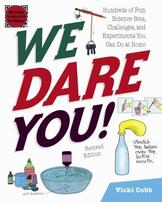 Would you believe that you could throw an egg across the room without breaking it? Burn a candle underwater? Vicki Cobb's We Dare You! is a gigantic collection of irresistible, easy-to-perform science experiments, tricks, bets, and games kids can do at home with everyday household objects. Thanks to the principles of gravity, mechanics, fluids, logic, geometry, energy, and perception, kids will find countless hours of fun with the selections included in this book. If you would like to make a We Dare You Video, click here. Vicki Cobb is a member of iNK's Authors on Call and is available for classroom programs through Field Trip Zoom, a terrific technology that requires only a computer, wifi, and a webcam. Click here to find out more. MLA 8 Citation
Cobb, Vicki. "A Bouncing Ball Like You've Never Seen." Nonfiction Minute, iNK Think Tank, 5 Feb. 2018, www.nonfictionminute.org/the-nonfiction-minute/ a-bouncing-ball-like-you've-never-seen.  Every fall, the smell of popcorn and hot dogs fills the air as fans make their way into stadiums to cheer for the home team. Football is such a big part of our world that it is hard to imagine life in America without the sport. But in 1905, football was nearly cancelled—forever. By the end of the year, nineteen boys had died as a result of playing football. Because of these deaths and the many injuries that occurred during the season, Columbia University in New York City decided they would no longer have a football team. Other colleges considered banning their football teams too. At the time, Teddy Roosevelt was President of the United States. He was a football fan and believed young Americans should live a “strenuous life” filled with hard work and physical activity. President Roosevelt did not want America to lose football, but he also understood the game needed to be less brutal that it was. So he called a meeting between the coaches of Harvard, Yale and Princeton on October 9, 1905. The coaches joined Roosevelt at the White House to discuss how to make football safer. As the season drew to a close, the future of football was still in question. In December Walter Camp, the man who invented American football, led a group called the Intercollegiate Rules Committee to make rule changes. As part of the changes, the Committee wanted officials to enforce rules against kneeing, kicking and punching on the field. For the first time football would include a forward pass. They also changed the distance it would take for a first down—it had been five yards, but the new rules changed it to ten yards. The rule changes of 1905 are still part of football today, and so is Walter Camp’s Committee. Today it is known as the National Collegiate Athletic Association (NCAA) which still governs the rules of college football. 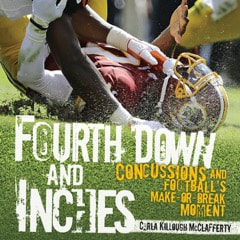 Did you know that football was almost banned in 1905 because nineteen players were dead and countless others injures? Carla McClafferty has written a book that balances the love of America’s most popular spectator sport with a hard look at its costs for players. This is a must read for players and coaches. Carla McClafferty is a member of iNK's Authors on Call and is available for classroom programs through Field Trip Zoom, a terrific technology that requires only a computer, wifi, and a webcam. Click here to find out more. MLA 8 Citation
McClafferty, Carla Killough. "The Near-Death Experience of Football." Nonfiction Minute`, iNK Think Tank, 1 Feb. 2018, www.nonfictionminute.org/the-nonfiction-minute/ the-near-death-experience-of-football. 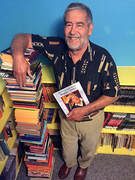 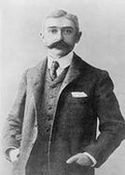 Baron Pierre de Coubertin Baron Pierre de Coubertin French aristocrat Baron Pierre de Coubertin (1863–1937) was a scholar of ancient Greece. With the sting of France’s defeat in the Franco-Prussian War in 1871 in his mind, he believed that strong young men were better able to fight wars. He especially admired the English school system, in which academic learning and physical fitness worked side by side. His studies convinced him that this harmony of mind and body originated in the gymnasia of ancient Greece. This harmony reached its highest level in the Olympics, which originated in the Greek village of Olympia in 776 BCE. They continued every four years until being suppressed in 393 CE as a pagan ritual. The Games began with a single event—a sprint of about 200 yards—and eventually encompassed a wide variety of sports. The Games were so prestigious among the Greeks that winners were set up for the rest of their lives. To reintroduce this sporting ideal into the modern world, de Coubertin proposed reviving the Olympics. Olympia was too small and too remote to serve as the site, so de Coubertin and his associates chose Athens, the Greek capital and largest city, instead. Two hundred forty one athletes from 14 nations descended on Athens in April 1896 to compete in nine sports: track and field, cycling, fencing, gymnastics, shooting, swimming, tennis, weightlifting, and wrestling. Only track and wrestling had been part of the ancient Olympics. Another event not in the original Games was the marathon run. Organizers wanted a signature event to recall the glory of ancient Greece. In 490 BCE, a messenger supposedly ran from the plain of Marathon to Athens to announce a stunning victory over a much larger invading Persian army. So the route of the first-ever “marathon race” was about 22 miles, from the battlefield to the Olympic Stadium. The winner, Spiridon Loues, had done no formal training. His occupation of water carrier in the hills overlooking Athens gave him considerable stamina and he became an instant national hero. A prominent Greek industrialist reportedly offered his daughter in marriage. Loues was already engaged. He settled for a horse and cart for his business instead. Today the Olympics are regarded as the premier sporting event in the world. In the 2012 Olympics in London, England, 10,768 athletes from 204 nations competed in 26 sports. Nearly 4,800 were women—something that never happened in the original Olympics. All the entrants then were men. 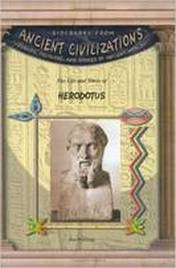 Jim Whiting has written a book on the ancient Greek writer Herodotus, who is known as the father of history. Herodotus provides most of what is known about one of the most important periods in world history. It began in 490 BCE. An invading Persian army was defeated at the Battle of Marathon. It concluded just over ten years later with Greek victories at Salamis and Plataea. The triumph allowed the Greeks to develop ideas and institutions in politics, economics, science, and even sports. These are the bases for how the Western world thinks and acts today. For more information, click here. MLA 8 Citation
Whiting, Jim. "Reviving the Olympics." Nonfiction Minute, iNK Think Tank, 20 Feb. 2018, www.nonfictionminute.org/the-nonfiction-minute/ reviving-the-olympics. |
*NEWS
|
For Vicki Cobb's BLOG (nonfiction book reviews, info on education, more), click here: Vicki's Blog
The NCSS-CBC Notable Social Studies Committee is pleased to inform you
that 30 People Who Changed the World has been selected for Notable Social Studies Trade Books for Young People 2018, a cooperative project of the National Council for the Social Studies (NCSS) & the Children’s Book Council
Categories
All
Abolitionists
Adams Janus
Adaptation
Adaptations
Adkins Jan
Advertising
Aerodynamics
Africa
African American History
African Americans
Africa West
Agriculture
Aircraft
Air Pilots
Air Pressure
Air Travel
Albee Sarah
Alchemy
Alligators
Allusion
American History
American Icons
Amphibians
Amundsen Roald
Anatomy
Ancient
Ancient Cultures
Anderson Marian 1897-1993
Animal Behavior
Animal Experimentation
Animal Intelligence
Animals
Animation
Antarctica
Ants
Apache Indians
Apes
April Fool's Day
Architecture
Argument
Arithmetic
Art
Art Deco
Artists
Arts
Asia
Astronauts
Astronomy
Athletes
Atomic Theory
Audubon Societies
Authors
Autobiography
Automobiles
Aviation
Awards
Bacteria
Baseball
Battuta Ibn
Bears
Beatles
Beavers
Bees
Biodegradation
Biography
Biology
Biomes
Biomimicry
Biplanes
Birds
Black Death
Black History
Blindness
Blizzards
Bombs
Bonaparte Napoleon
Boone Daniel
Botany
Brazil
Bridges
Brill Marlene Targ
Brooklyn Bridge
Brown John
Buffaloes
Building Materials
Butterflies
Caesar
Caesar Julius
Caissons
Calculus
Calendars
Cannibal
Capitals
Caravaggio
Carbon Dioxide
Carnivores
Carson Mary Kay
Cartoons & Comics
Carving (Decorative Arts)
Cascade Range
Castaldo Nancy
Castles
Castrovilla Selene
Cathedrals
Cats
Caves
Celts
Cemeteries
Chemistry
Children's Authors
Child Welfare
China
Choctaw Indians
Christmas
Chronometers
Cicadas
Cinco De Mayo
Ciphers
Circle
Citizenship
Civil Rights
Civil Rights Movements
Civil War
Civil War - US
Climate
Climate Change
Clocks And Watches
Clouds
Cobb Vicki
COBOL (Computer Language)
Code And Cipher Stories
Collard III Sneed B.
Collectors And Collecting
Color
Commerce
Communication
Competition
Compilers
Composers
Computers
Congressional Gold Medal
Consitution
Contests
Contraltos
Coolidge Calvin
Cooling
Corms
Corn
Counterfeiters
Covid-19
Crocodiles
Cryptography
Culture
Darwin Charles
Declaration Of Independence
Decomposition
Decompression Sickness
Deep-sea Animals
Deer
De Medici Catherine
Design
Detectives
Dickens Charles
Disasters
Discrimination
Diseases
Disney Walt
DNA
Dogs
Dollar
Dolphins
Douglass Frederick 1818-1895
Droughts
Dr. Suess
Dunphy Madeleine
Ear
Earth
Earthquakes
Ecology
Economics
Ecosystem
Edison Thomas A
Education
Egypt
Eiffel-gustave-18321923
Eiffel-tower
Einstein-albert
Elephants
Elk
Emancipationproclamation
Endangered Species
Endangered-species
Energy
Engineering
England
Englishlanguage-arts
Entomology
Environmental-protection
Environmental-science
Equinox
Erie-canal
Etymology
Europe
European-history
Evolution
Experiments
Explorers
Explosions
Exports
Extinction
Extinction-biology
Eye
Fairs
Fawkes-guy
Federalgovernment
Film
Fires
Fishes
Flight
Floods
Flowers
Flute
Food
Food-chains
Foodpreservation
Foodsupply
Food-supply
Football
Forceandenergy
Force-and-energy
Forensicscienceandmedicine
Forensic Science And Medicine
Fossils
Foundlings
France
Francoprussian-war
Freedom
Freedomofspeech
French-revolution
Friction
Frogs
Frontier
Frontier-and-pioneer-life
Frozenfoods
Fugitiveslaves
Fultonrobert
Galapagos-islands
Galleys
Gametheory
Gaudi-antoni-18521926
Gender
Generals
Genes
Genetics
Geography
Geology
Geometry
Geysers
Ghosts
Giraffe
Glaciers
Glaucoma
Gliders-aeronautics
Global-warming
Gods-goddesses
Gold-mines-and-mining
Government
Grant-ulysses-s
Grasshoppers
Gravity
Great-britain
Great-depression
Greece
Greek-letters
Greenberg Jan
Hair
Halloween
Handel-george-frederic
Harness Cheryl
Harrison-john-16931776
Health-wellness
Hearing
Hearing-aids
Hearst-william-randolph
Henry-iv-king-of-england
Herbivores
Hip Hop
History
History-19th-century
History-france
History-world
Hitler-adolph
Hoaxes
Holidays
Hollihan Kerrie Logan
Homestead-law
Hopper-grace
Horses
Hot Air Balloons
Hot-air-balloons
Housing
Huguenots
Human Body
Hurricanes
Ice
Icebergs
Illustration
Imagery
Imhotep
Imperialism
Indian-code-talkers
Indonesia
Industrialization
Industrial-revolution
Inquisition
Insects
Insulation
Intelligence
Interstatecommerce
Interviewing
Inventions
Inventors
Irrational-numbers
Irrigation
Islands
Jacksonandrew
Jazz
Jeffersonthomas
Jefferson-thomas
Jemisonmae
Jenkins-steve
Jet-stream
Johnsonlyndonb
Jokes
Journalism
Keeling-charles-d
Kennedyjohnf
Kenya
Kidnapping
Kingmartinlutherjr19291968
Kingmartinlutherjr19291968d6528702d6
Kings-and-rulers
Kings Queens
Kings-queens
Koala
Labor
Labor Policy
Lafayette Marie Joseph Paul Yves Roch Gilbert Du Motier Marquis De 17571834
Landscapes
Languages-and-culture
Law-enforcement
Layfayette
Levers
Levinson Cynthia
Lewis And Clark Expedition (1804-1806)
Lewis Edmonia
Liberty
Lift (Aerodynamics)
Light
Lindbergh Charles
Liszt Franz
Literary Devices
Literature
Lizards
Longitude
Louis XIV King Of France
Lumber
Lunar Calendar
Lynching
Macaws
Madison-dolley
Madison-james
Madison-james
Mammals
Maneta-norman
Maneta-norman
Marathon-greece
Marine-biology
Marine-biology
Marines
Marsupials
Martial-arts
Marx-trish
Mass
Massachusetts-maritime-academy
Mass-media
Mastodons
Mathematics
May-day
Mcclafferty-carla-killough
Mcclafferty-carla-killough
Mckinley-william
Measurement
Mechanics
Media-literacy
Media-literacy
Medicine
Memoir
Memorial-day
Metaphor
Meteorology
Mexico
Mickey-mouse
Microscopy
Middle-west
Migration
Military
Miners
Mississippi
Molasses
Monarchy
Monsters
Montgomery
Montgomery-bus-boycott-19551956
Montgomery-heather-l
Monuments
Moon
Moran-thomas
Morsecode
Morsesamuel
Moss-marissa
Moss-marissa
Motion
Motion-pictures
Mummies
Munro-roxie
Munro-roxie
Musclestrength
Museums
Music
Muslims
Mythologygreek
Nanofibers
Nanotechnology
Nathan-amy
Nathan-amy
Nationalfootballleague
Nationalparksandreserves
Nativeamericans
Native-americans
Native-americans
Naturalhistory
Naturalists
Nature
Nauticalcharts
Nauticalinstruments
Navajoindians
Navigation
Navy
Ncaafootball
Nervoussystem
Newdeal19331939
Newman-aline
Newman-aline
Newton-isaac
New-york-city
Nobelprizewinners
Nomads
Nonfictionnarrative
Nutrition
Nylon
Nymphs-insects
Oaths Of Office
Occupations
Ocean
Ocean-liners
Olympics
Omnivores
Optics
Origami
Origin
Orphans
Ottomanempire
Painters
Painting
Paleontology
Pandemic
Paper-airplanes
Parksrosa19132005
Parrots
Passiveresistance
Patent Dorothy Hinshaw
Peerreview
Penguins
Persistence
Personalnarrative
Personification
Pets
Photography
Physics
Pi
Pigeons
Pilots
Pinkertonallan
Pirates
Plague
Plains
Plainsindians
Planets
Plantbreeding
Plants
Plastics
Poaching
Poetry
Poisons
Poland
Police
Political-parties
Pollen
Pollution
Polo-marco
Populism
Portraits
Predation
Predators
Presidentialmedaloffreedom
Presidents
Prey
Prey-predators
Prey-predators
Prime-meridian
Pringle Laurence
Prohibition
Proteins
Protestandsocialmovements
Protestants
Protestsongs
Punishment
Pyramids
Questioning
Radio
Railroad
Rainforests
Rappaport-doreen
Ratio
Reading
Realism
Recipes
Recycling
Refrigerators
Reich-susanna
Religion
Renaissance
Reproduction
Reptiles
Reservoirs
Rheumatoidarthritis
Rhythm-and-blues-music
Rice
Rivers
Roaringtwenties
Roosevelteleanor
Rooseveltfranklind
Roosevelt-franklin-d
Roosevelt-theodore
Running
Russia
Safety
Sanitation
Schwartz David M
Science
Scientificmethod
Scientists
Scottrobert
Sculpture
Sculpturegardens
Sea-level
Seals
Seals-animals
Secretariesofstate
Secretservice
Seeds
Segregation
Segregationineducation
Sensessensation
September11terroristattacks2001
Seuss
Sextant
Shackletonernest
Shawneeindians
Ships
Shortstories
Silkworms
Simple-machines
Singers
Siy Alexandra
Slavery
Smuggling
Snakes
Socialchange
Social-change
Socialjustice
Social-justice
Socialstudies
Social-studies
Social-studies
Sodhouses
Solarsystem
Sound
Southeast-asia
Soybean
Space Travelers
Spain
Speech
Speed
Spiders
Spies
Spiritualssongs
Sports
Sports-history
Sports-science
Spring
Squirrels
Statue-of-liberty
STEM
Storms
Strategy
Sugar
Sumatra
Summer
Superbowl
Surgery
Survival
Swanson-jennifer
Swinburne Stephen R.
Synthetic-drugs
Taiwan
Tardigrada
Tasmania
Tasmanian Devil
Tasmanian-devil
Technology
Tecumsehshawneechief
Telegraph-wireless
Temperature
Tennis
Terrorism
Thomas Peggy
Thompson Laurie Ann
Time
Titanic
Tombs
Tortoises
Towle Sarah
Transcontinental-flights
Transportation
Travel
Trees
Trung Sisters Rebellion
Tundra
Turnips
Turtles
Typhoons
Underground Railroad
Us-environmental-protection-agency
Us History
Us-history
Ushistoryrevolution
Us History Revolution
Us-history-war-of-1812
Us Presidents
Ussupremecourtlandmarkcases
Vacations
Vaccines
Vangoghvincent
Vegetables
Venom
Vietnam
Viruses
Visual-literacy
Volcanoes
Voting-rghts
War
Warne-kate
Warren Andrea
Washington-dc
Washington George
Water
Water-currents
Wax-figures
Weapons
Weather
Weatherford Carole Boston
Whiting Jim
Wildfires
Winds
Windsor-castle
Wolves
Woman In History
Women
Women Airforce Service Pilots
Women-airforce-service-pilots
Womeninhistory
Women In History
Women-in-science
Women's History
Womens-roles-through-history
Wonder
Woodson-carter-godwin-18751950
World-war-i
World War Ii
World-war-ii
Wright Brothers
Writing
Writing-skills
Wwi
Xrays
Yellowstone-national-park
Zaunders Bo
ArchivesMarch 2021
February 2021
January 2021
December 2020
November 2020
October 2020
September 2020
June 2020
May 2020
April 2020
March 2020
February 2020
January 2020
December 2019
October 2019
September 2019
August 2019
July 2019
May 2019
April 2019
March 2019
February 2019
January 2019
December 2018
November 2018
September 2018
June 2018
May 2018
April 2018
March 2018
February 2018
January 2018
December 2017
November 2017
October 2017
September 2017
March 2017
The NONFICTION MINUTE, Authors on Call, and. the iNK Books & Media Store are divisions of iNK THINK TANK INC.
a 501 (c) (3) nonprofit corporation. To return to the iNK Think Tank landing page click the icon or the link below. :
http://inkthinktank.org/
For more information or support, contact thoughts@inkthinktank.org
For Privacy Policy, go to
Privacy Policy
© COPYRIGHT the Nonfiction Minute 2020.
ALL RIGHTS RESERVED.
This site uses cookies to personalize your experience, analyze site usage, and offer tailored promotions. www.youronlinechoices.eu
Remind me later
Archives
March 2023
February 2023
January 2023
December 2022
November 2022
October 2022
September 2022
June 2022
May 2022
April 2022
March 2022
February 2022
January 2022
December 2021
November 2021
September 2021
April 2021
March 2021
February 2021
November 2020
October 2020
September 2020
June 2020
May 2020
April 2020
March 2020
February 2020
January 2020
October 2019
August 2019
July 2019
May 2019
April 2019
December 2018
September 2018
June 2018
May 2018
March 2018
February 2018
January 2018
December 2017
November 2017
October 2017
September 2017




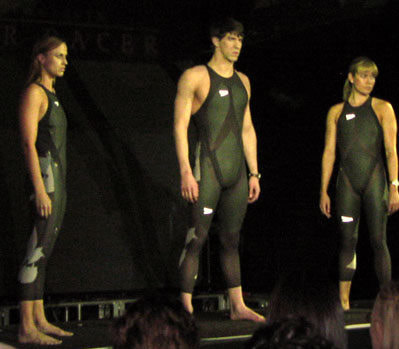
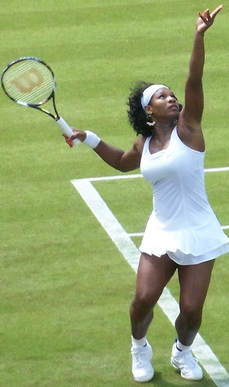
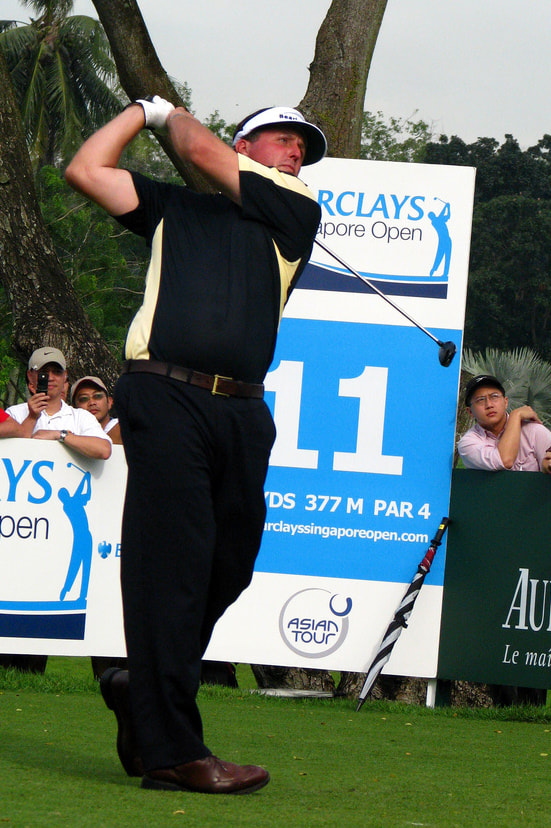


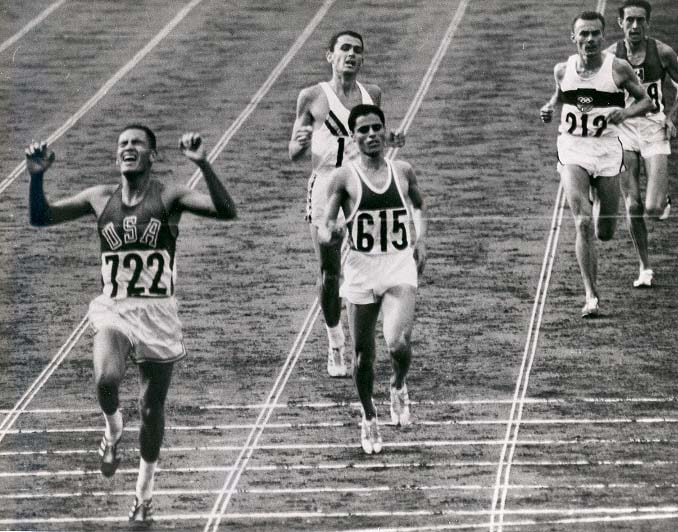


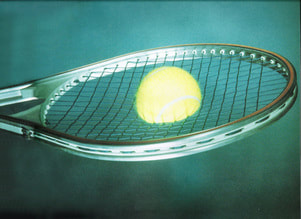


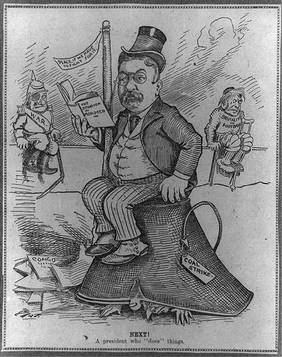


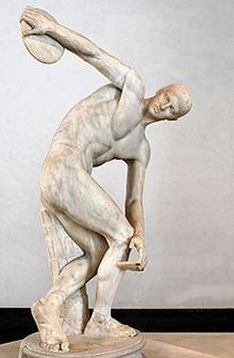
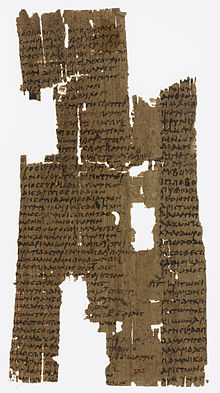
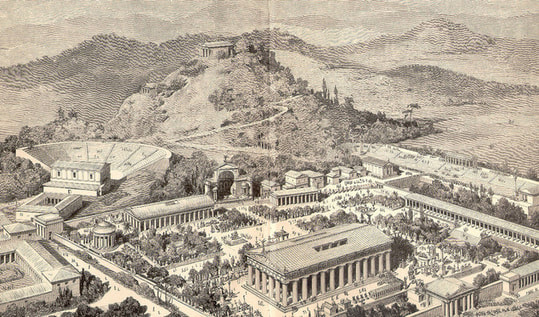
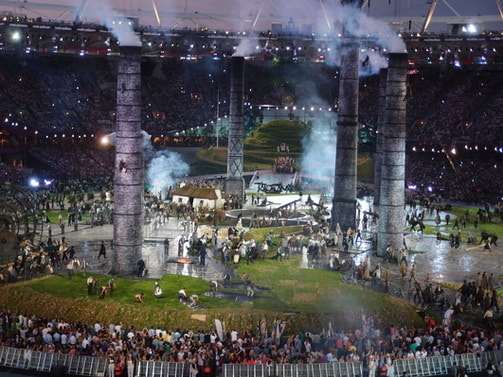

 RSS Feed
RSS Feed
